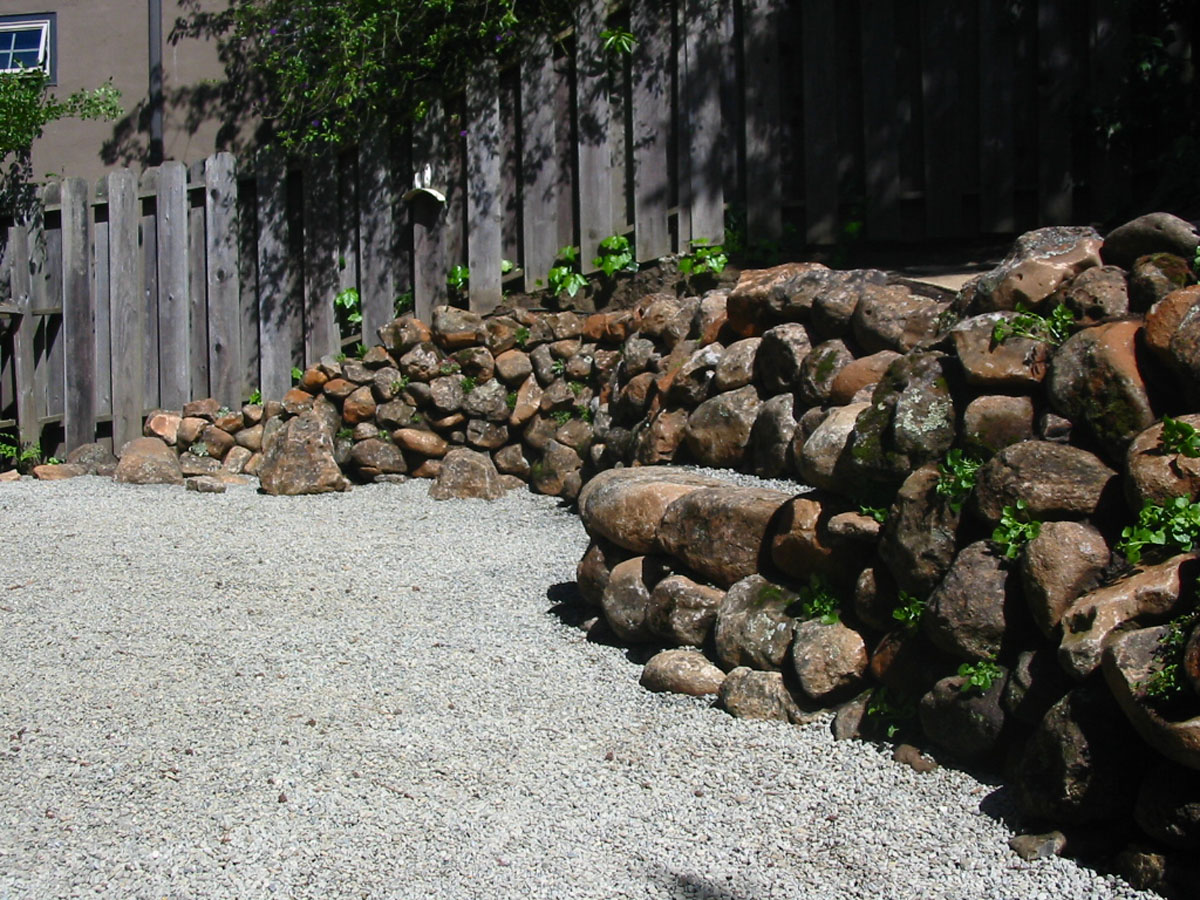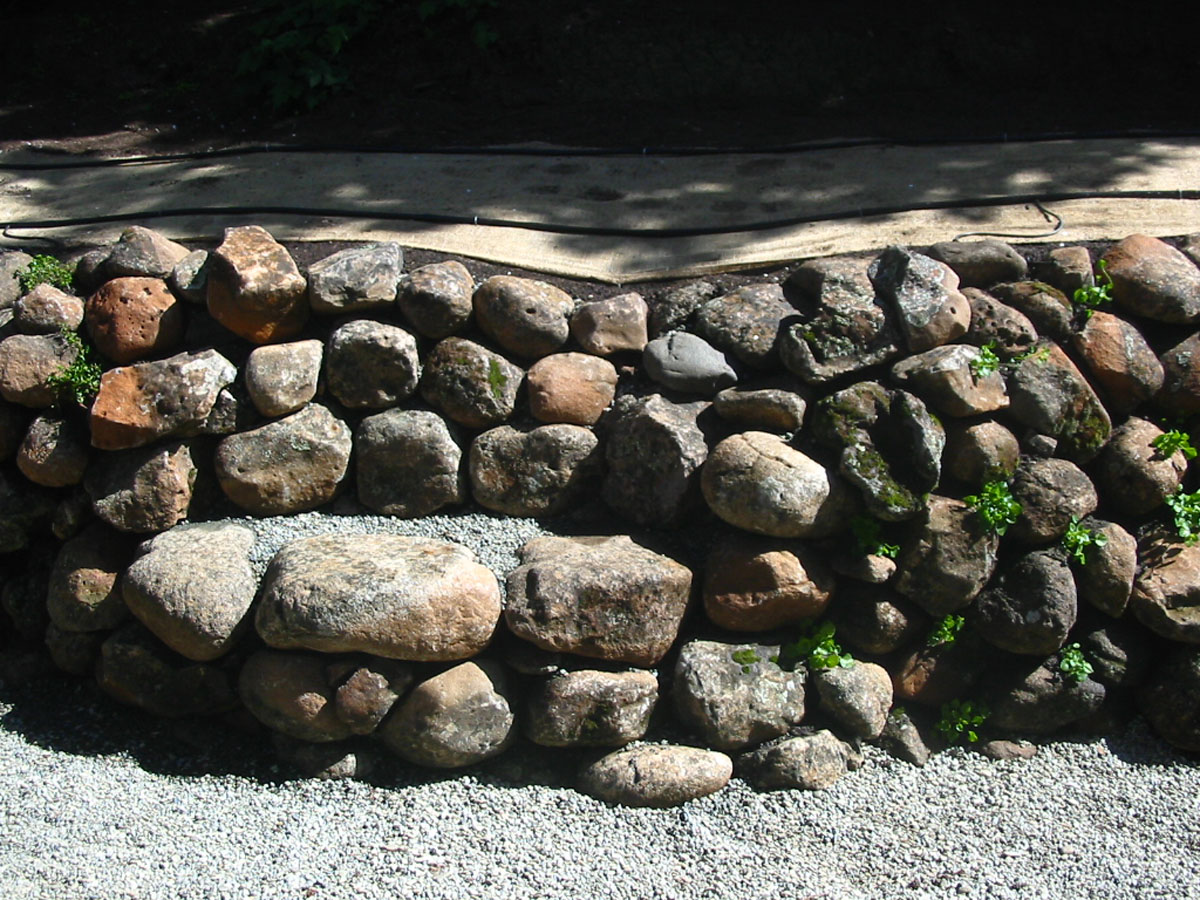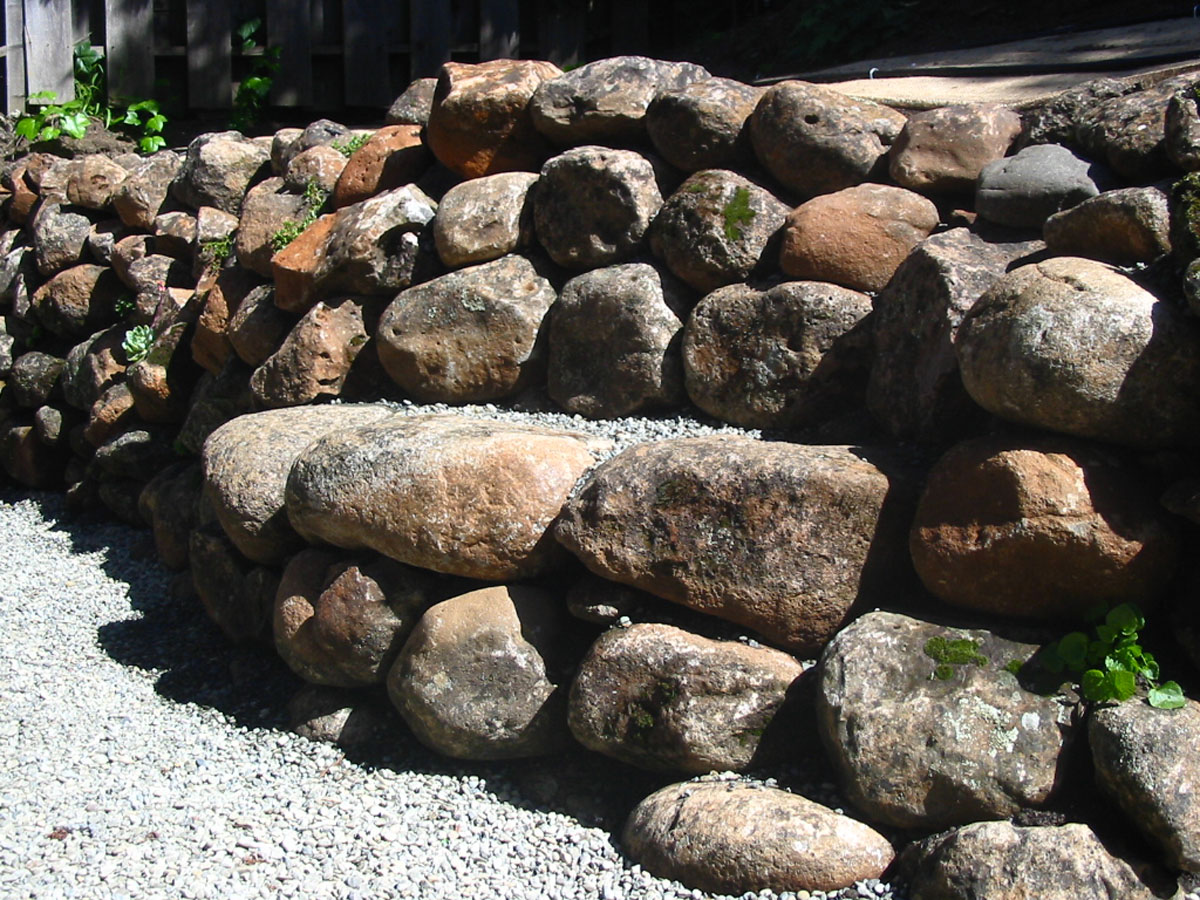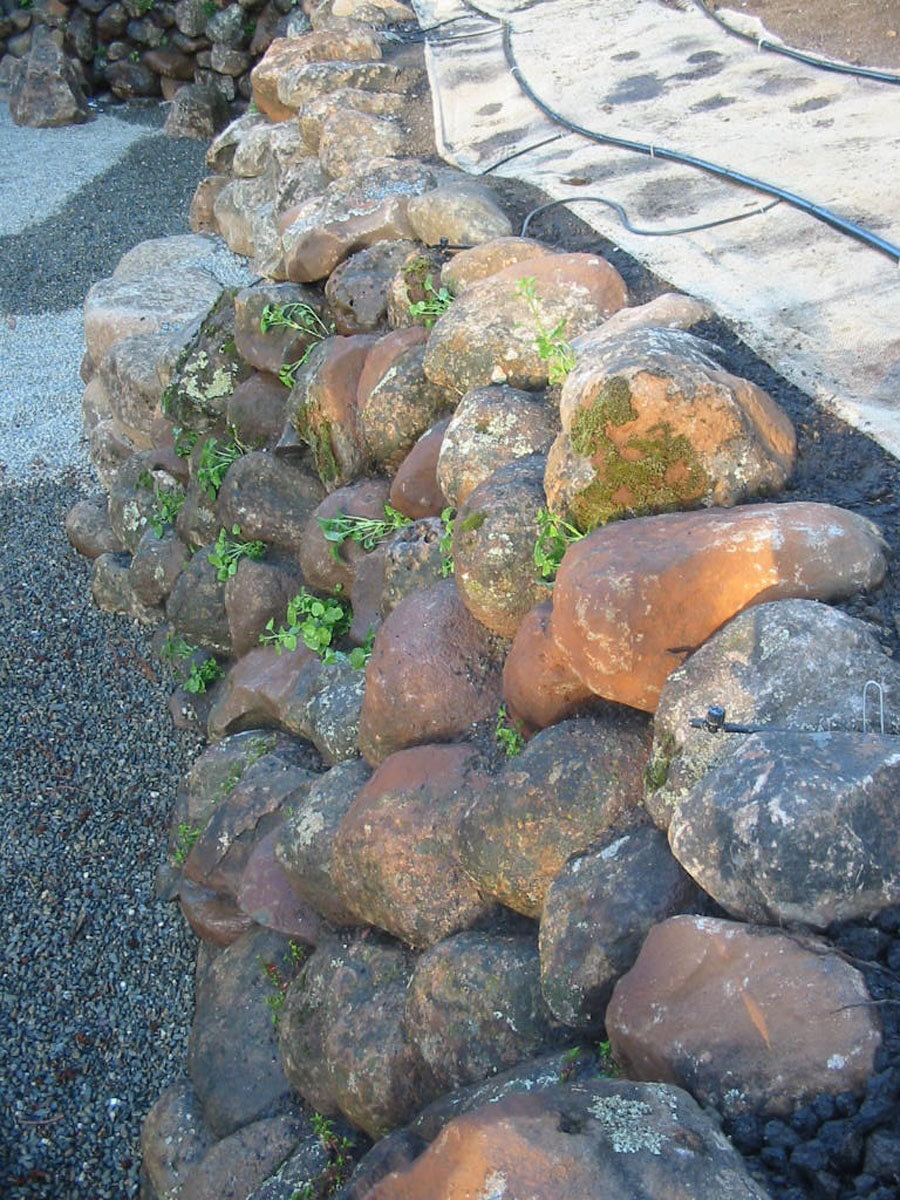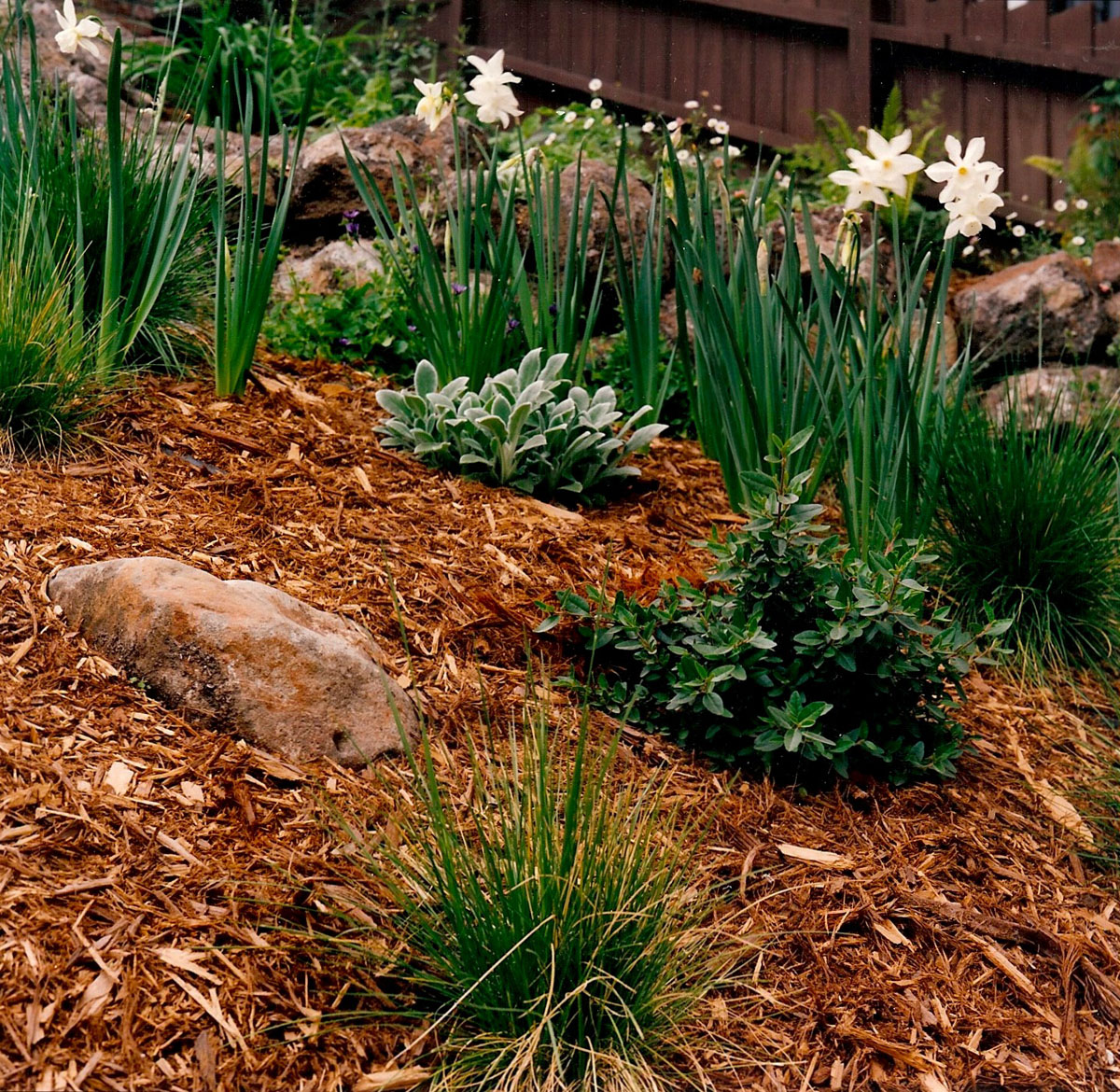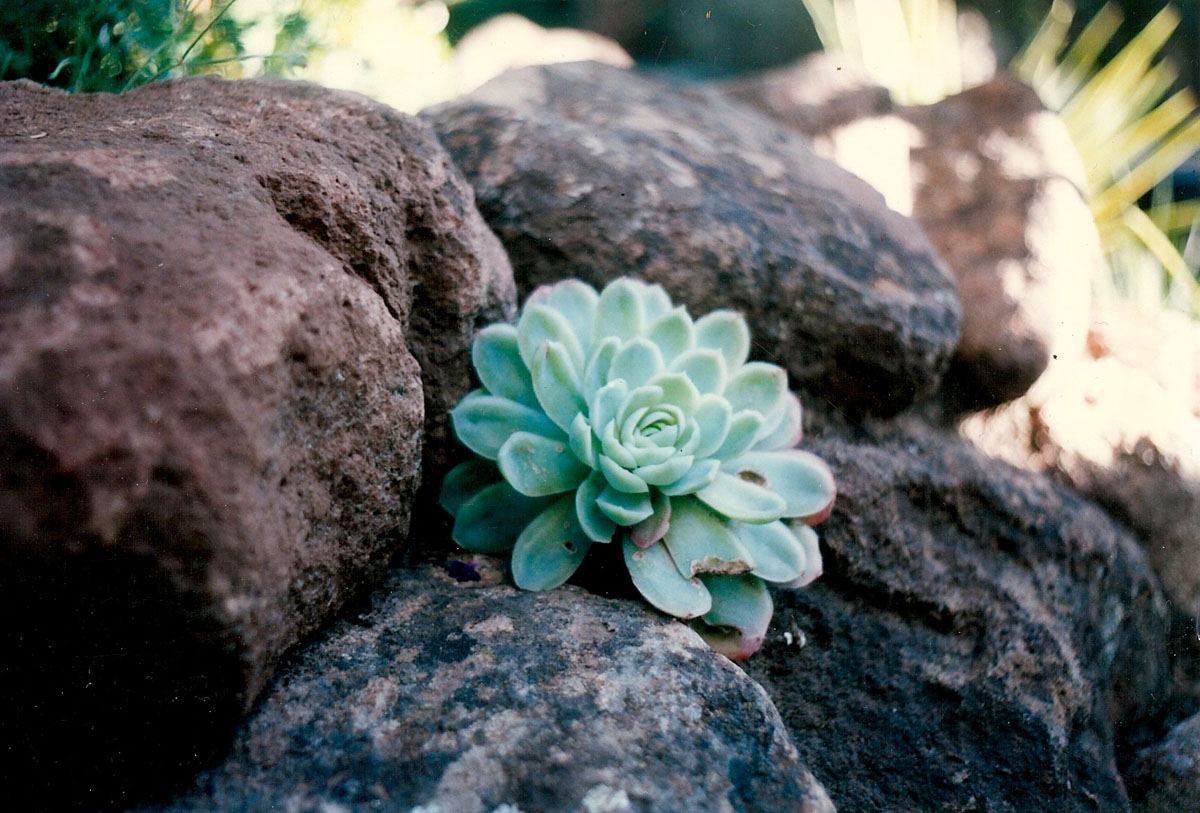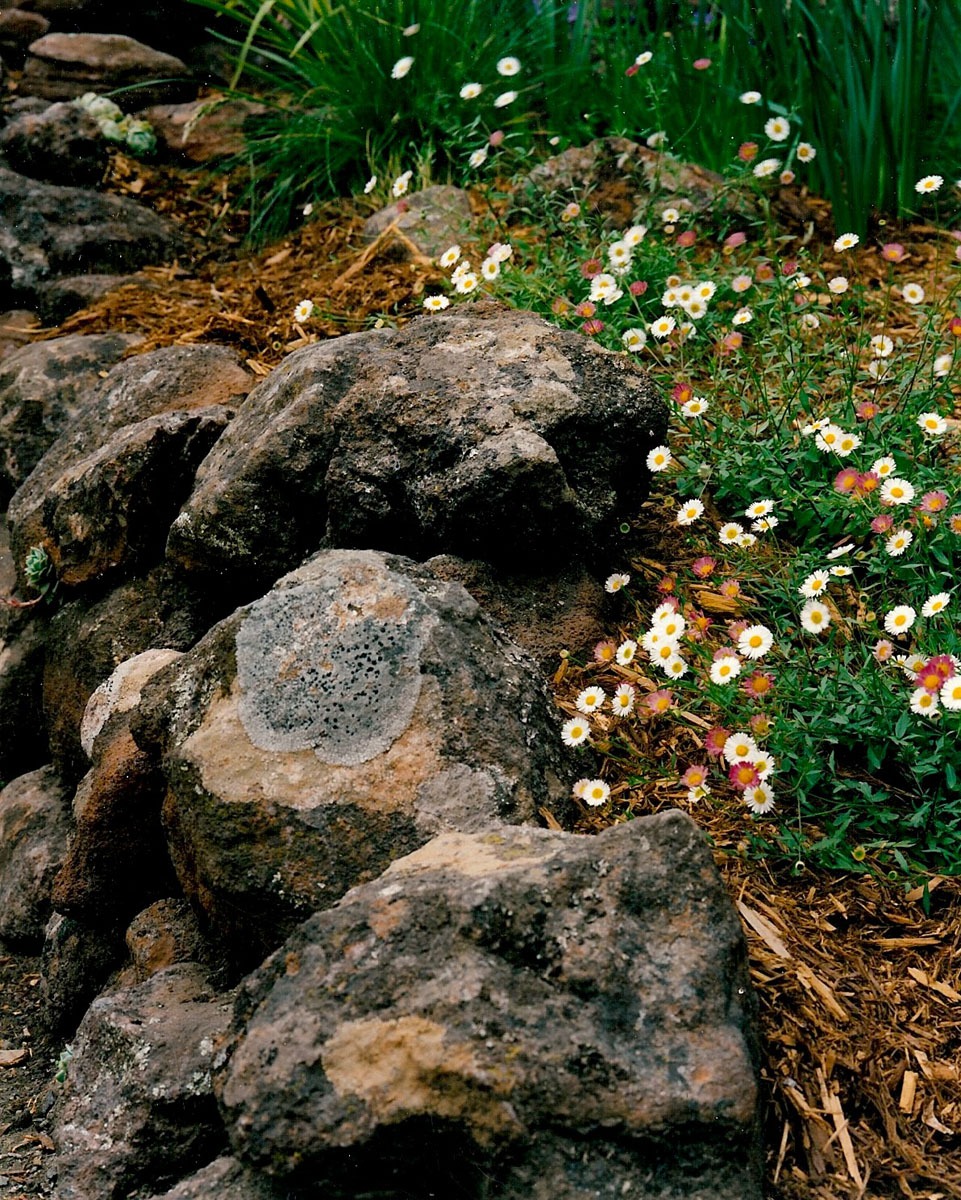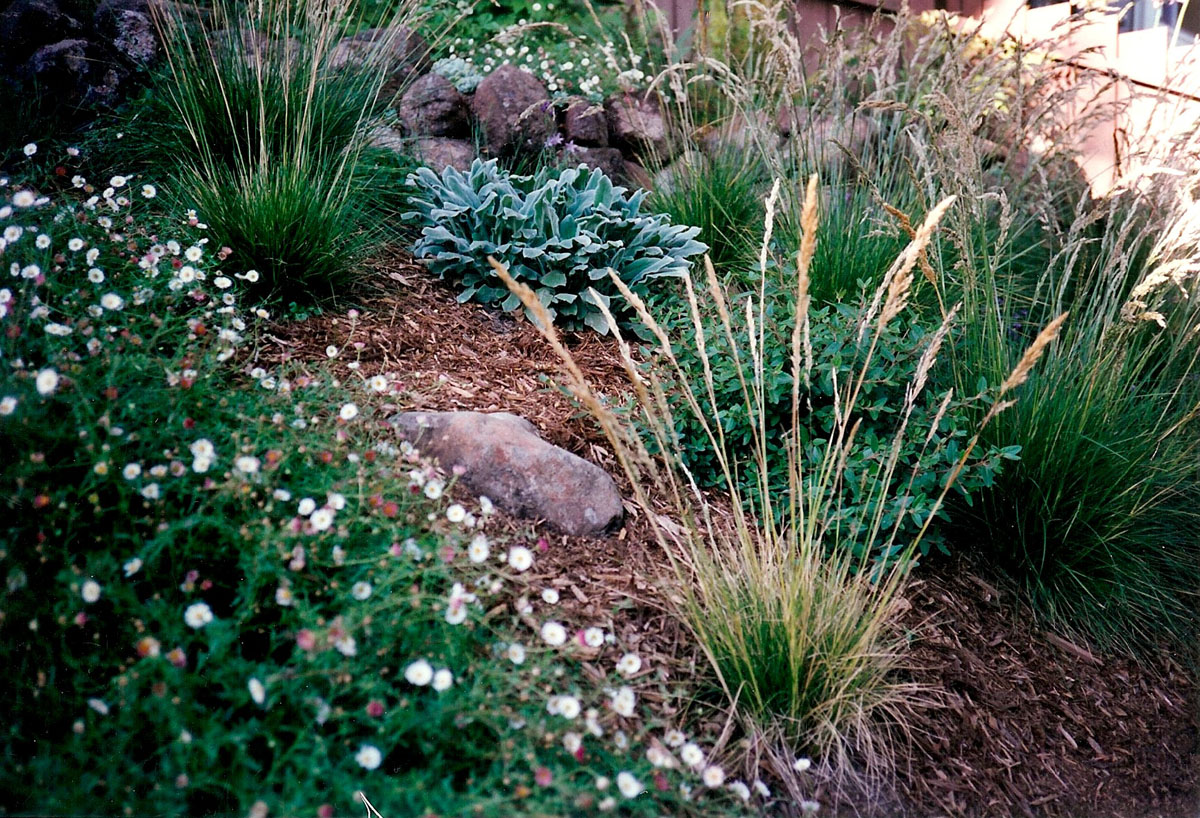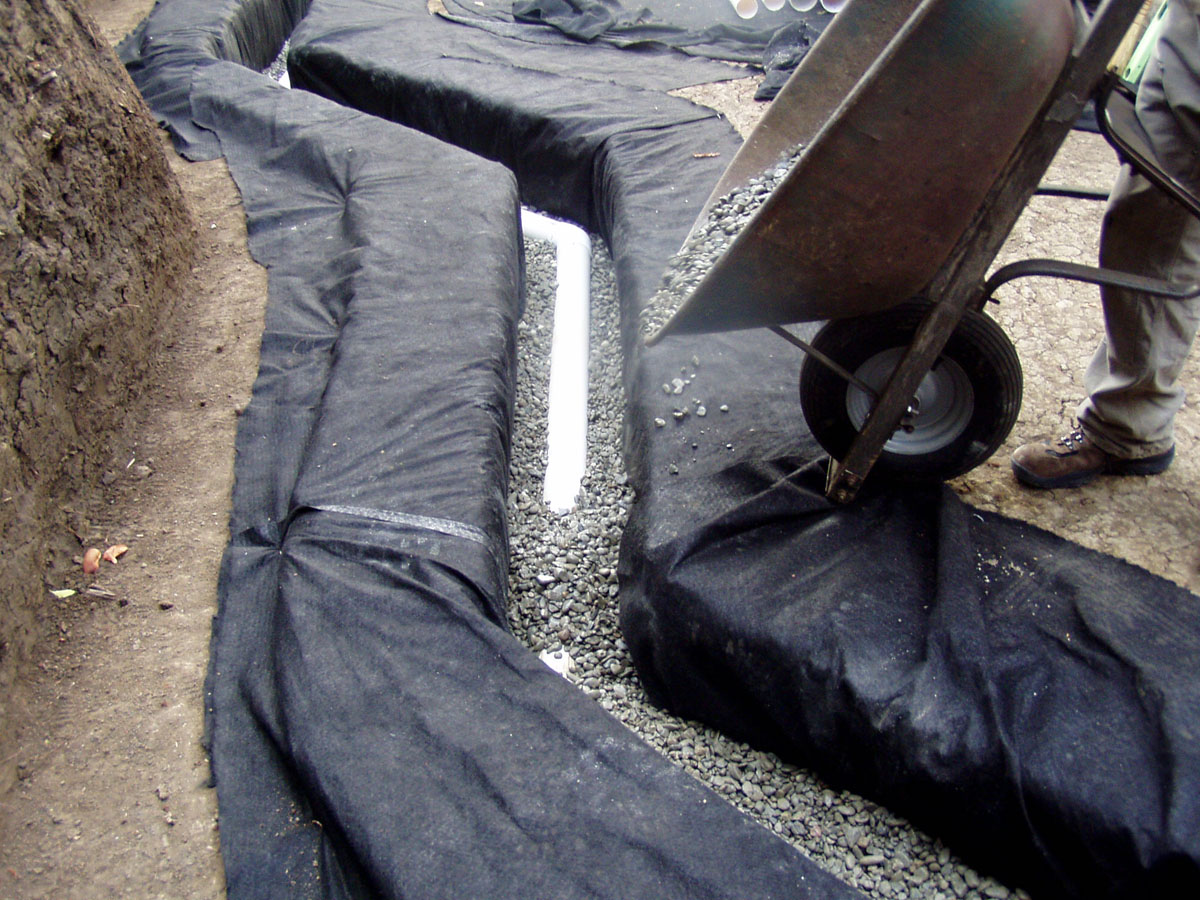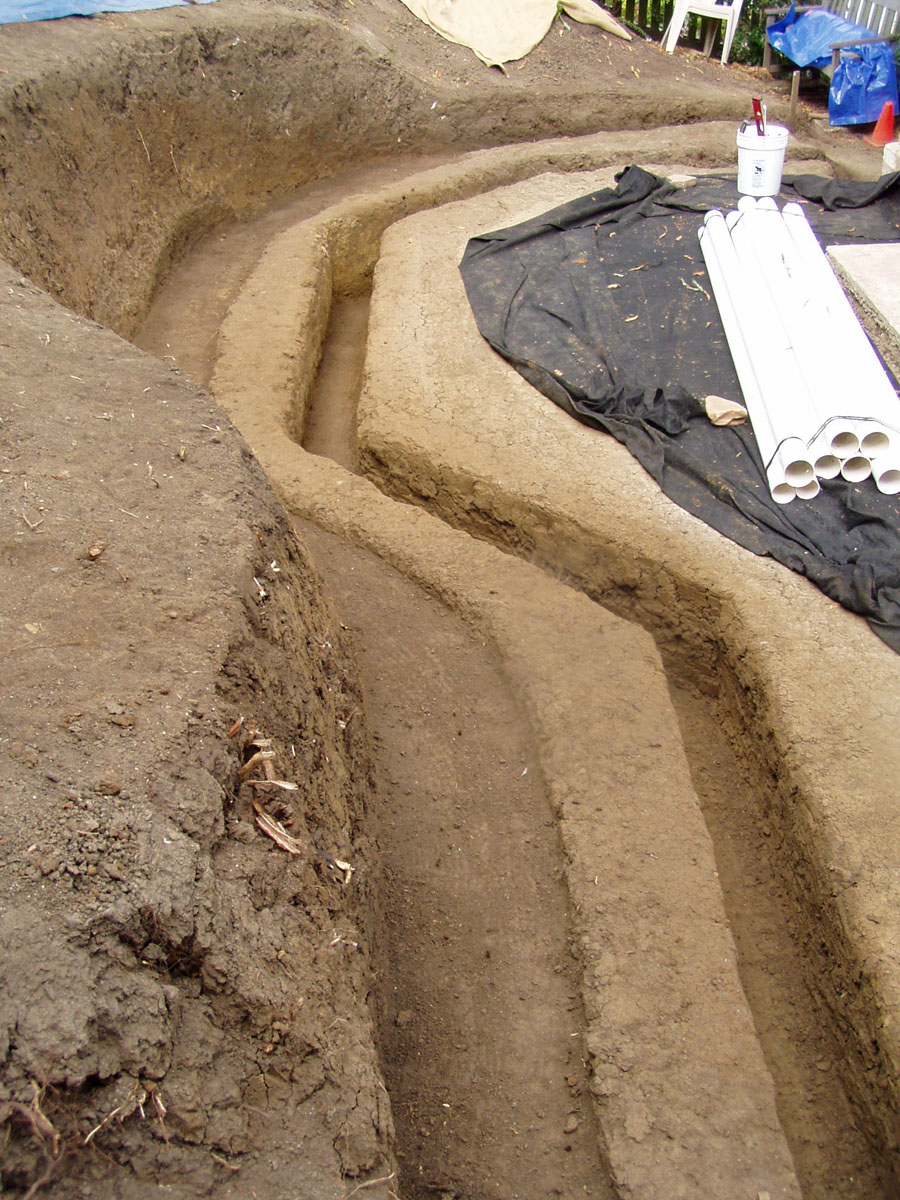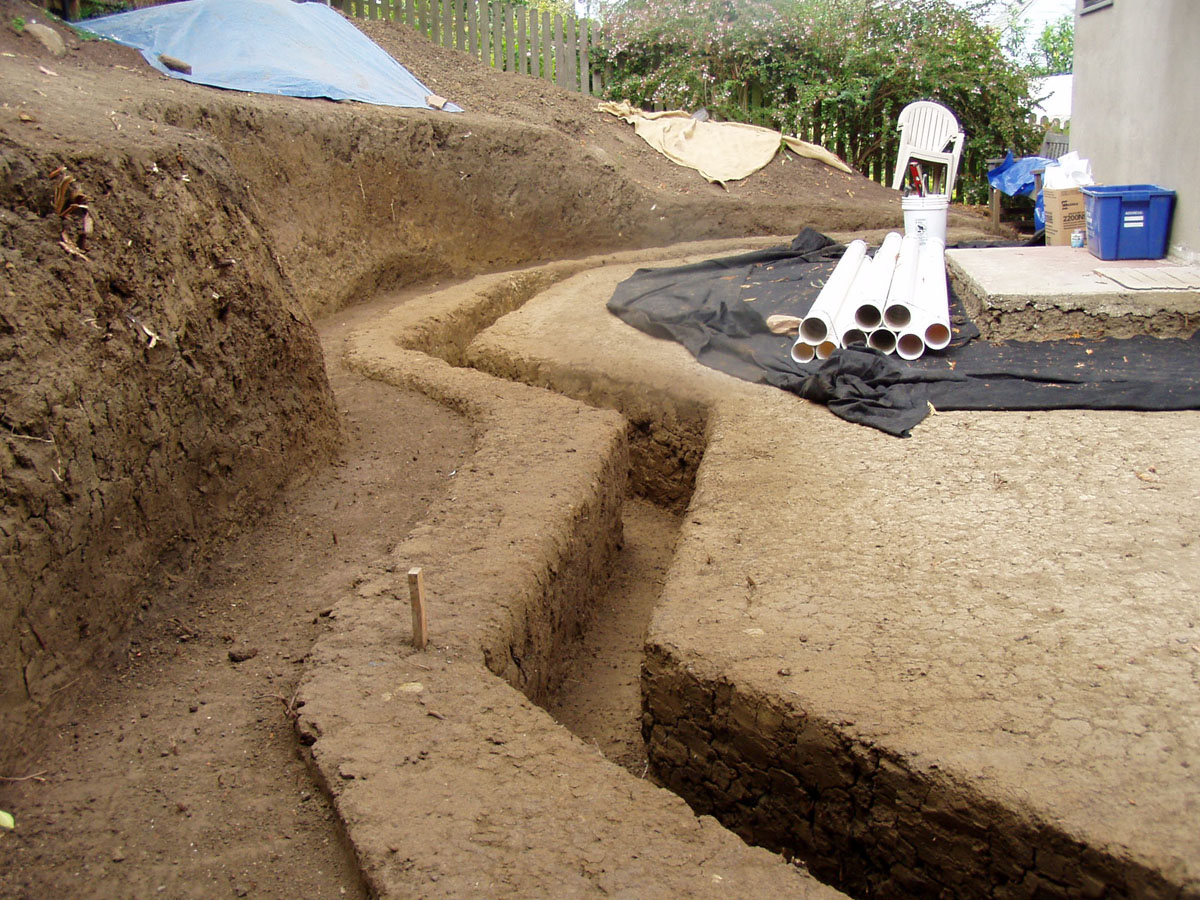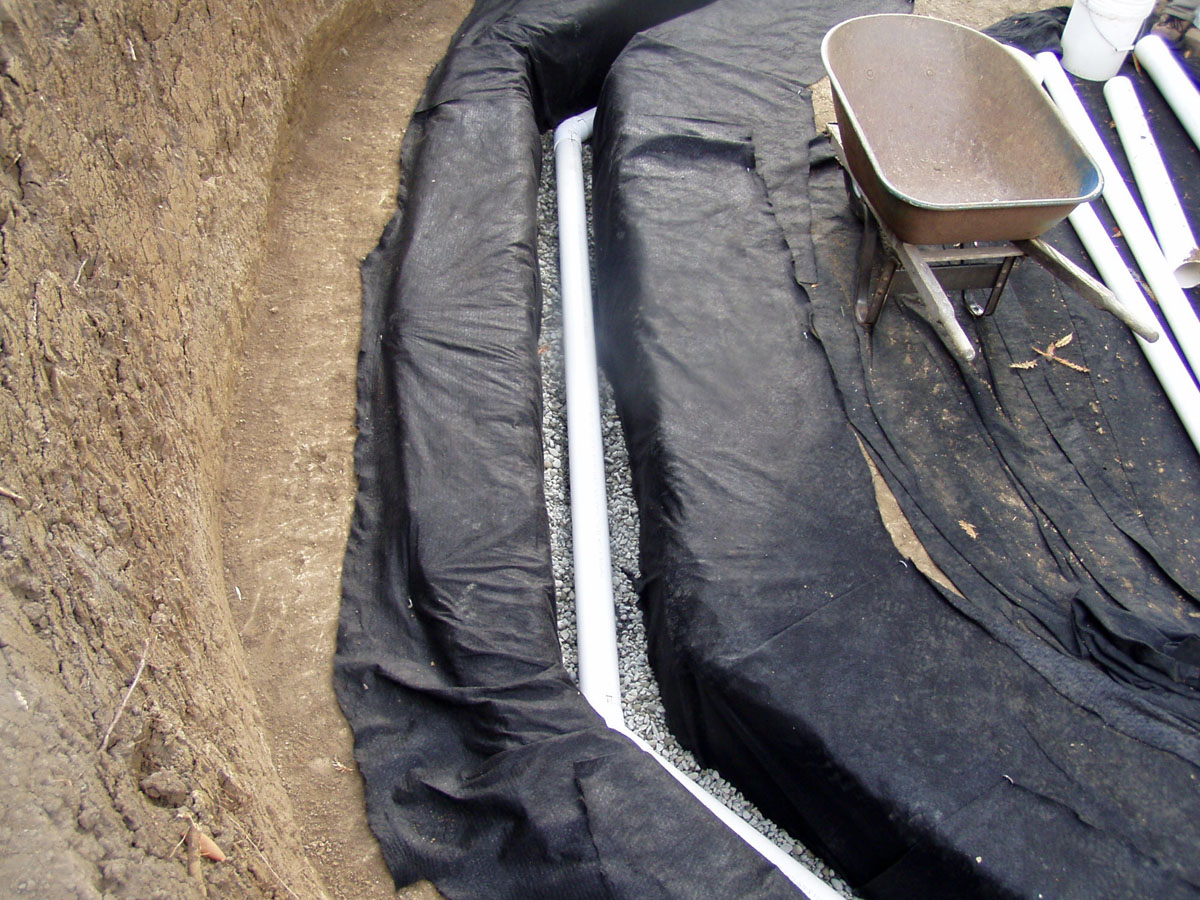Clay Soils & Water
Going with the flow
Clay is often a problem for homeowners in the bay area. I use its characteristics (its fine particles) to create a solution (the horizontal flow of water). By grading the clay precisely, I re-direct water away from the house and bring it, whenever possible, into the garden.
Another problem presented by clay is how much it expands when saturated with water – up to 6 times its original size.
One house was below a hillside. We wanted to drain the water away from the house. But the new flagstone patio had to be graded towards the house to follow the grade of the entryway. We graded the clay beneath the future patio at a 3% slope away from the house to the foot of the hillside where we placed a French drain. We laid the flagstone in a loose pattern with pea gravel between the stones. The water fell to the clay beneath and was transported to the French drain.
The surface of this clay soil is as smooth as glass and sloped in the direction I want the water to flow.
Stone Walls and Terracing
Dry stacked stone walls are built to disperse rainwater into the soil and make the soil more friable, with less impact on the wall and more nourishment for the plants. When I build dry-stacked rock walls, I build a double wall. The back-up wall links between the stones of the primary wall. This strengthens the primary wall and gives it flexibility. I also back the wall with amended soil to ease the pressure on the wall.
Building rock walls across an existing slope moderates the steepness of the slope. This checks the flow of water downhill and spreads the flow of water across the land nourishing the earth, and cuts down on soil erosion. It also looks good! Adding dimension, depth and detail to an otherwise nonnegotiable and harrowing slope.
Diversionary Swales & French drains
Diversionary swales and French drains can collect and redirect water to a wetlands area, swale or creek bed. Collecting rainwater from the roof of the house and redirecting the water into your garden can raise the water table so that once plants have established themselves their roots can more readily access water from the land. Generally more water is available during the dry season thereby prolonging the time when irrigation becomes necessary.


